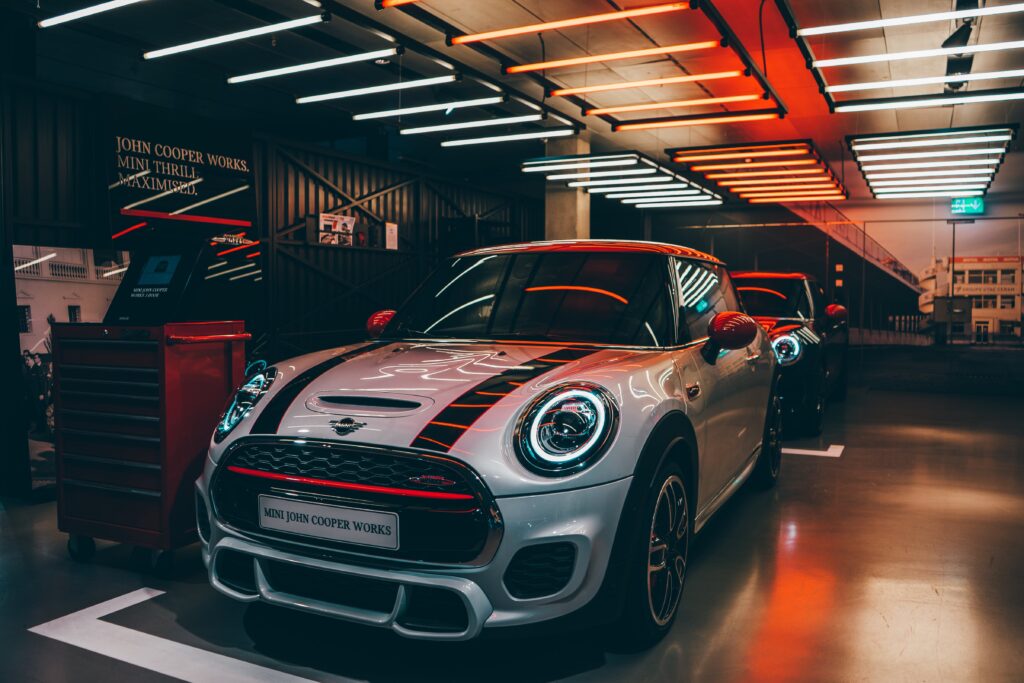
The Mini Cooper is more than just a car; it is a symbol of British automotive innovation and a cultural icon that has captured the hearts of millions around the world. Since its inception in 1959, the Mini Cooper has undergone numerous transformations, each reflecting changes in technology, design, and consumer preferences. This article takes you on a journey through the history of the Mini Cooper, exploring its evolution from a practical solution for fuel efficiency to a beloved classic and modern-day favorite.
The Birth of the Mini Cooper (1959-1969)
The Original Mini
The story of the Mini Cooper begins with the original Mini, designed by Sir Alec Issigonis and launched by the British Motor Corporation (BMC) in 1959. The car was conceived in response to the Suez Crisis, which had caused fuel shortages and increased demand for fuel-efficient vehicles. Issigonis’s design was revolutionary, featuring a transverse engine and front-wheel drive, which allowed for more interior space within a compact exterior.
The Cooper Connection
The Mini’s initial success caught the attention of John Cooper, a renowned race car designer and builder. Cooper saw the potential for the Mini to become a competitive rally car. In 1961, the Mini Cooper was born, featuring a more powerful engine and improved handling. The Mini Cooper S, introduced in 1963, became famous for its performance in motorsports, including three wins at the Monte Carlo Rally in the 1960s.
The Evolution Continues (1970-1999)
The British Leyland Era
In 1968, BMC merged with Leyland Motors to form British Leyland, which continued to produce the Mini Cooper throughout the 1970s and 1980s. Despite financial difficulties and changing market conditions, the Mini remained popular due to its distinctive design and driving experience. During this period, various iterations of the Mini were released, including the Clubman and the Mini 1275 GT.
The 1980s and 1990s: A Classic in Decline
By the late 1980s and early 1990s, the Mini was beginning to show its age. Despite updates and limited editions, the car struggled to compete with more modern vehicles. However, its iconic status remained intact, and the Mini continued to enjoy a dedicated fan base.
The Revival: BMW’s Mini (2000-Present)
A New Beginning
In 1994, BMW acquired the Rover Group, which included the Mini brand. Recognizing the Mini’s potential, BMW embarked on a project to reinvent the car for the 21st century. The new Mini, launched in 2001, retained the charm and spirit of the original while incorporating modern technology and safety features.
The Modern Mini Cooper
The modern Mini Cooper, known for its distinctive design, go-kart-like handling, and premium features, quickly became a success. BMW’s strategy of combining nostalgic appeal with contemporary innovation paid off, and the Mini Cooper became a symbol of style and performance.
Expanding the Lineup
Since the relaunch, the Mini Cooper lineup has expanded to include various models and body styles, such as the Mini Convertible, Mini Clubman, and Mini Countryman. Each model retains the core attributes of the Mini brand while offering something unique to different segments of the market.
The Mini Cooper Today and Beyond
Embracing Electrification
In recent years, Mini has embraced the shift towards electric vehicles. The Mini Electric, launched in 2020, combines the classic Mini Cooper design with zero-emissions technology, offering a glimpse into the future of the brand.
A Global Icon
Today, the Mini Cooper continues to be a global icon, celebrated for its unique blend of heritage, innovation, and driving enjoyment. The brand’s commitment to evolving while staying true to its roots ensures that the Mini Cooper will remain a beloved car for generations to come.
Conclusion
The Mini Cooper’s journey from a practical solution to a global icon is a testament to its enduring appeal and adaptability. Each era of the Mini’s evolution reflects the changing landscape of the automotive industry and consumer preferences. From its origins as a fuel-efficient city car to its status as a symbol of style and performance, the Mini Cooper has captured the imagination of car enthusiasts around the world. As the automotive industry continues to evolve, the Mini Cooper is well-positioned to continue its legacy of innovation and charm.




